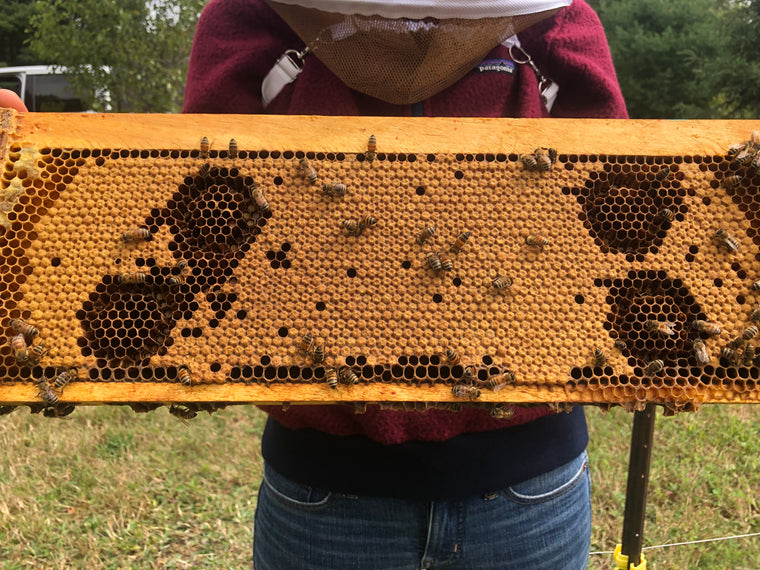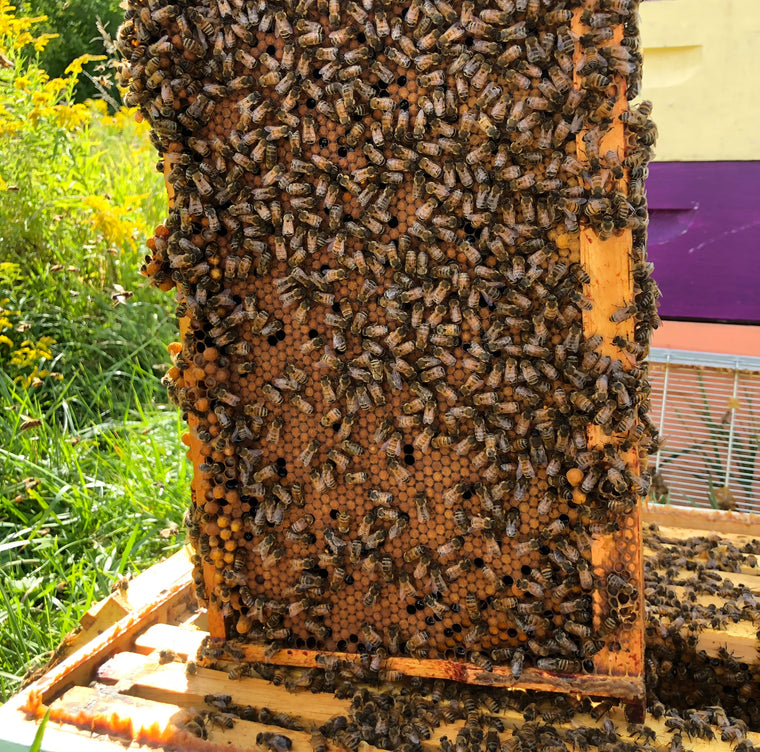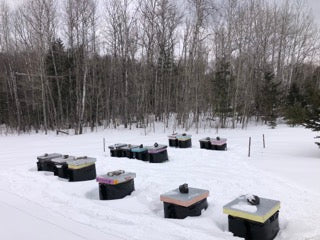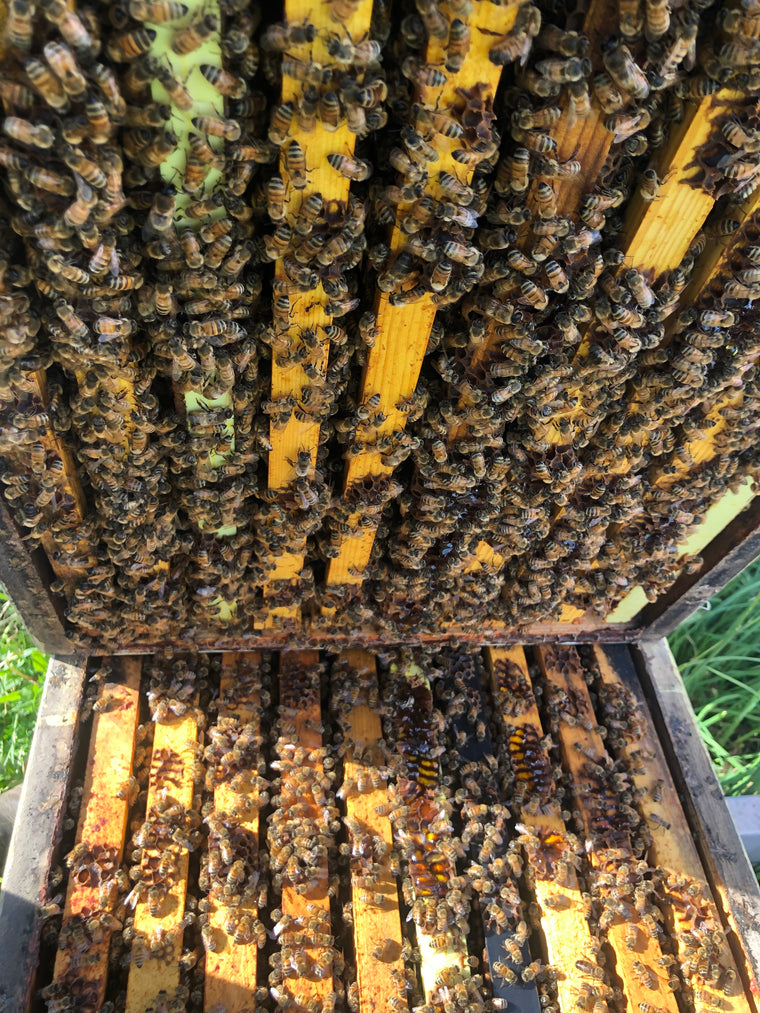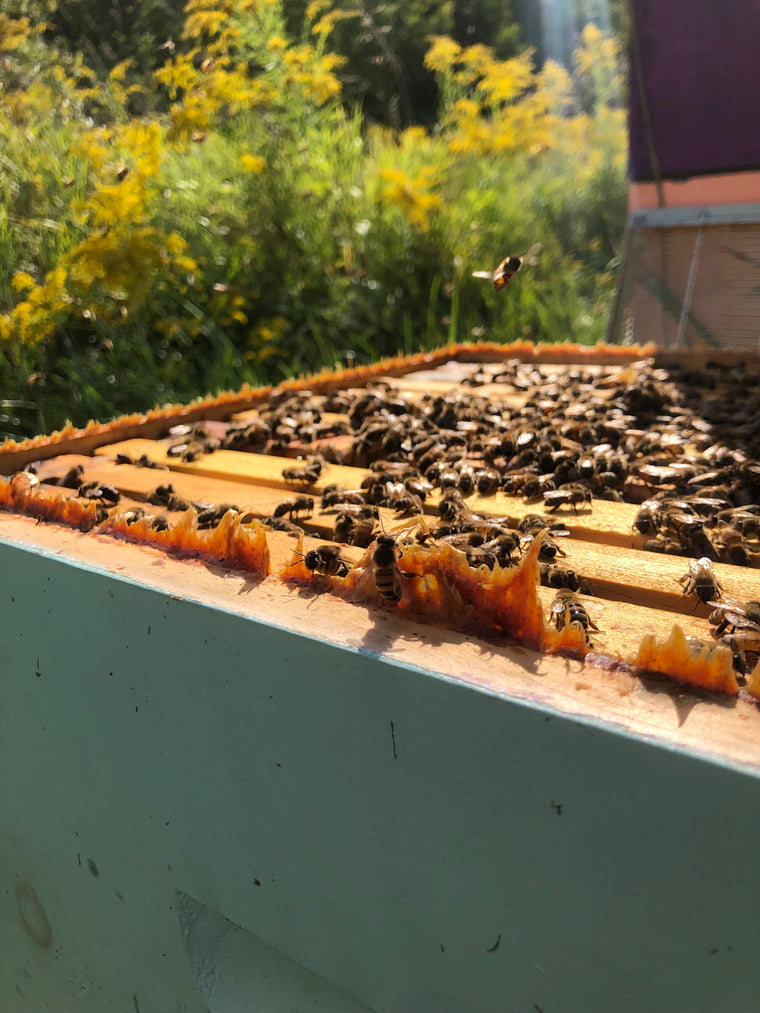Our breeding program pillars:
We are working towards breeding queen bees that are hygienic, have Low Varroa Growth over a season, good brood pattern, excellent overwintering ability, rapid spring build-up, gentle and great honey producers, all while having a low tendency to swarm and also good propolis collectors. Its a lot of work but work we are very proud of.

Hygienic Testing
What is Hygienic Testing? We use the liquid nitrogen freeze kill brood field test. This involves killing the correct age pupae with liquid nitrogen. We freeze four sections on a frame per bee hive. We come back 24 hours later and asses how many cells in the kill zone were uncapped, and how many pupae were removed. We asses both of these actions as there are two separate characteristics. We only breed from our queens whose hives express above 95% in both of these hygienic actions.
Why are these characteristics important to have in your hive? Honey bees that express high hygienic behaviour are more resilient against brood based diseases like Chalkbrood, Sacbrood, American Foulbrood and European Foulbrood.
Overall your honey bee hive will be healthier, happier and more likely to survive if you have hygienic queens leading your hives.
Photo: A frame 24 hours post freezing with all cells uncapped and pupae removed.
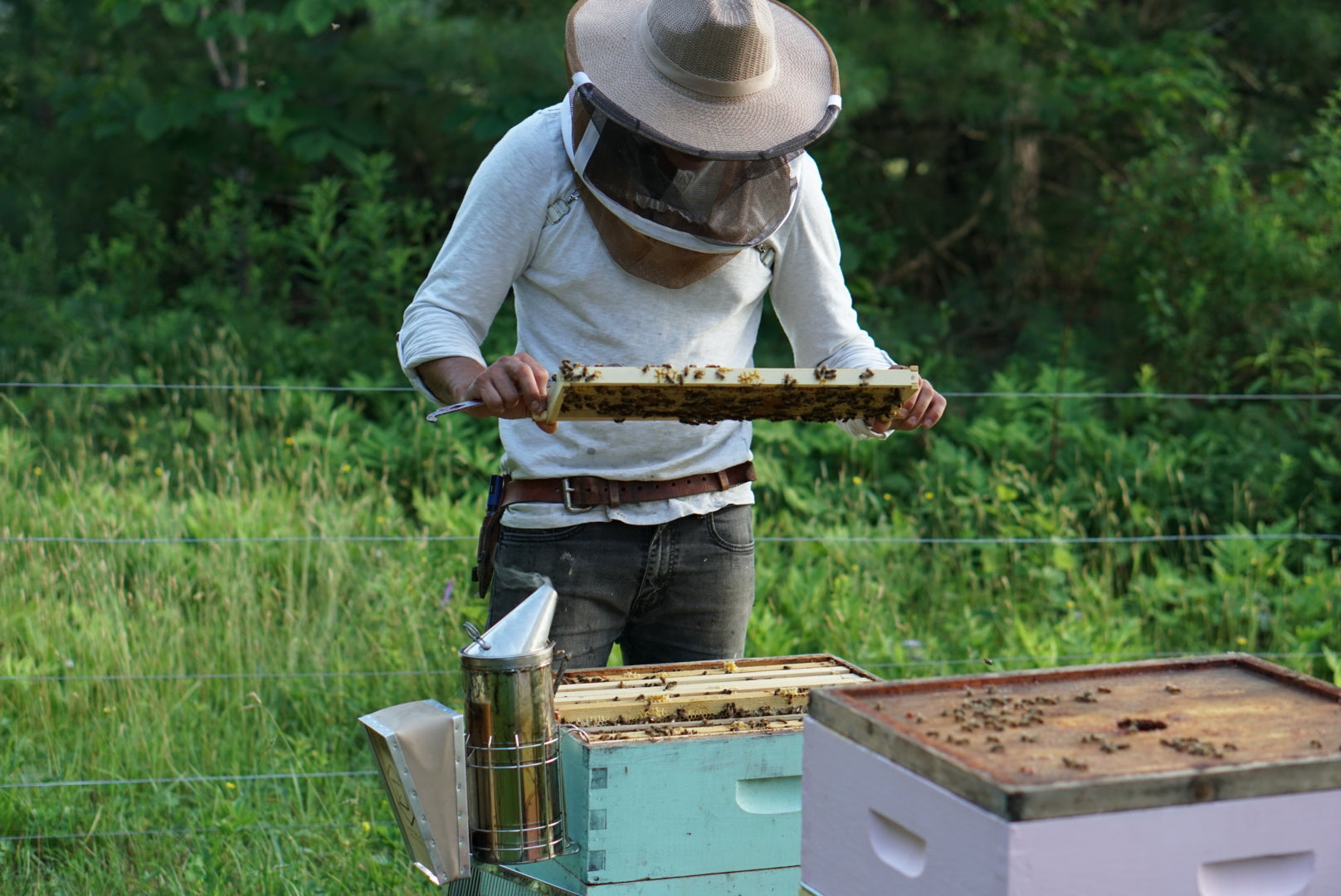
Searching for Low Varroa Growth
Low Varroa Growth or LVG for short is a field test that can be done to find hives that are expressing varroa resistant characteristics. This is by no means a fix to the current Varroa Mite problems plaguing beekeepers today, but we feel it is a major step in the right direction to building a more resilient bee. The great thing with LVG is it does not cover just one characteristic in the hive but the potential of many varroa resistant characteristics working together, some we know and some maybe yet to be found.
The test involves taking a mite sample in the late spring, mid May to early June for us, and then taking another sample mid to late August. In this time frame detailed records of each hive in the test must be kept. Nothing to effect the mite growth can be done in the hives, ie. treatment of mites, swarming, brood removal, re-queening… and so on. Only hives from the same bee yard can be compared to each other. After the second test we calculate the growth rate of Varroa mites in each hive and choose the best ones from each yard. These hives must also be hygienic to then become a breeder hive.
Photo: Beekeeper Graeme assessing hives in Muskoka.
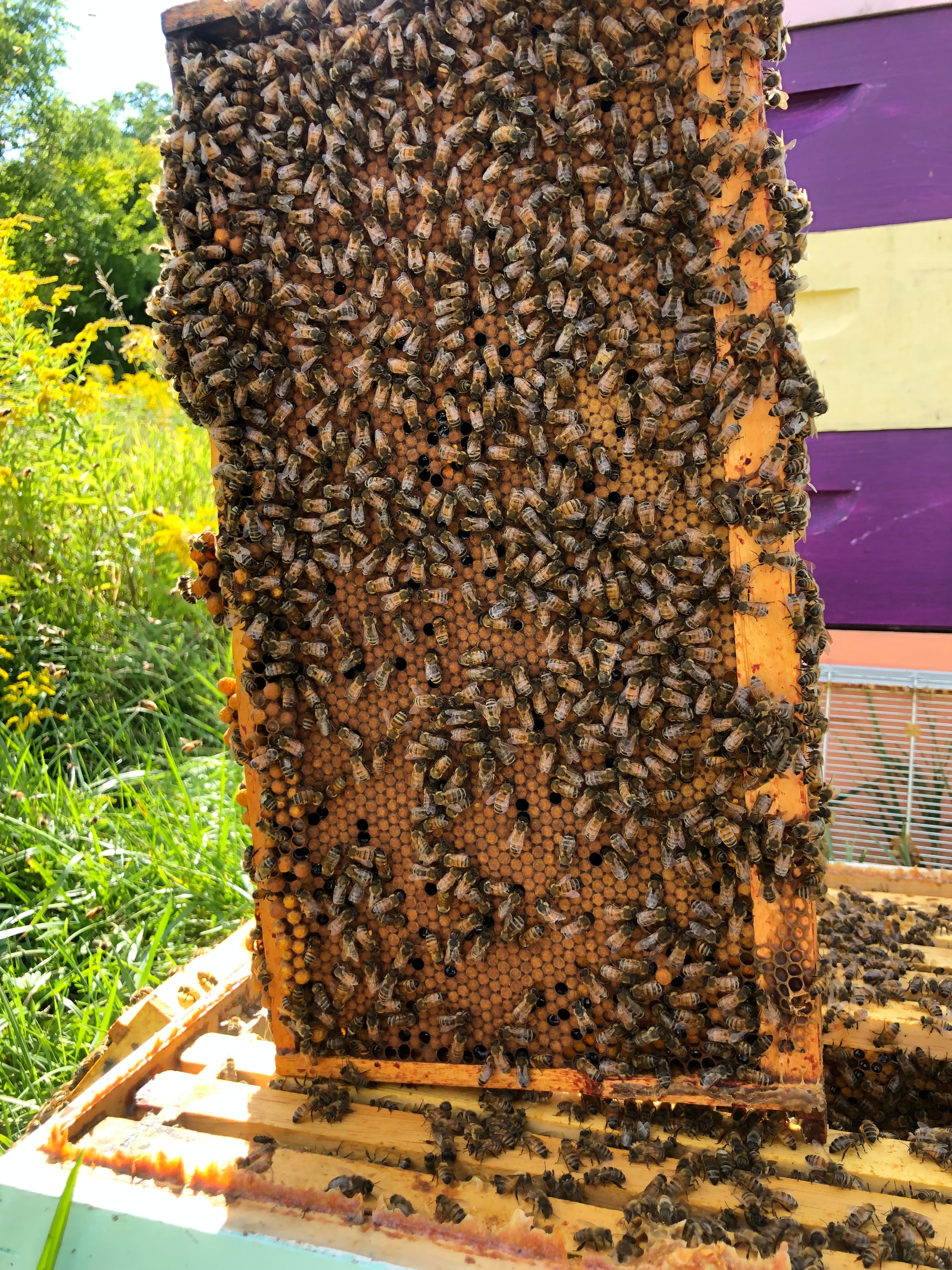
Brood Pattern
A good brood pattern is often a metric used to asses colony health. We like to asses brood patterns in the spring and fall. We want to see that almost all cells are filled, uniformly capped and that the hive is managing itself well and able to take care of all of the brood. Good pollen stores throughout the cluster and honey on top and on the edges are essential. Not only does a good brood pattern mean no disease present in the hive. It also means the queen is doing well and was well mated and taken care for. We like to see this in our daughter hives. Even if they are not selected breeders, its means our queens are being raised well.
Photo: A full frame of brood pulled from the centre of a brood nest.

Over-wintering ability
Over the winter months is when the majority of hive mortalities occur. We need bees that survive the winter.
Something that I learned in the first few years of beekeeping that I was not away of was just how varied hives can be in their use of honey stores over the winter. Some hives will burn through almost all of it and need fondant in the spring before the nectar flow. While others seem to weigh the same all winter and then rapidly use it in the spring just in time for the new early nectar flow. My hives are very spread out and I do not like to open feed so often am just able to top up honey stores for hives rather than feed them winter stores. This means that when selecting hives for breeders I needed bees that are frugal with their honey stores and can survive a cold long winter on less honey stores. Making sure our breeders are frugal with honey stores over the winter and have enough to heat the hive for spring build up is is a must.
Photo: Early April in our Port Loring bee yard.
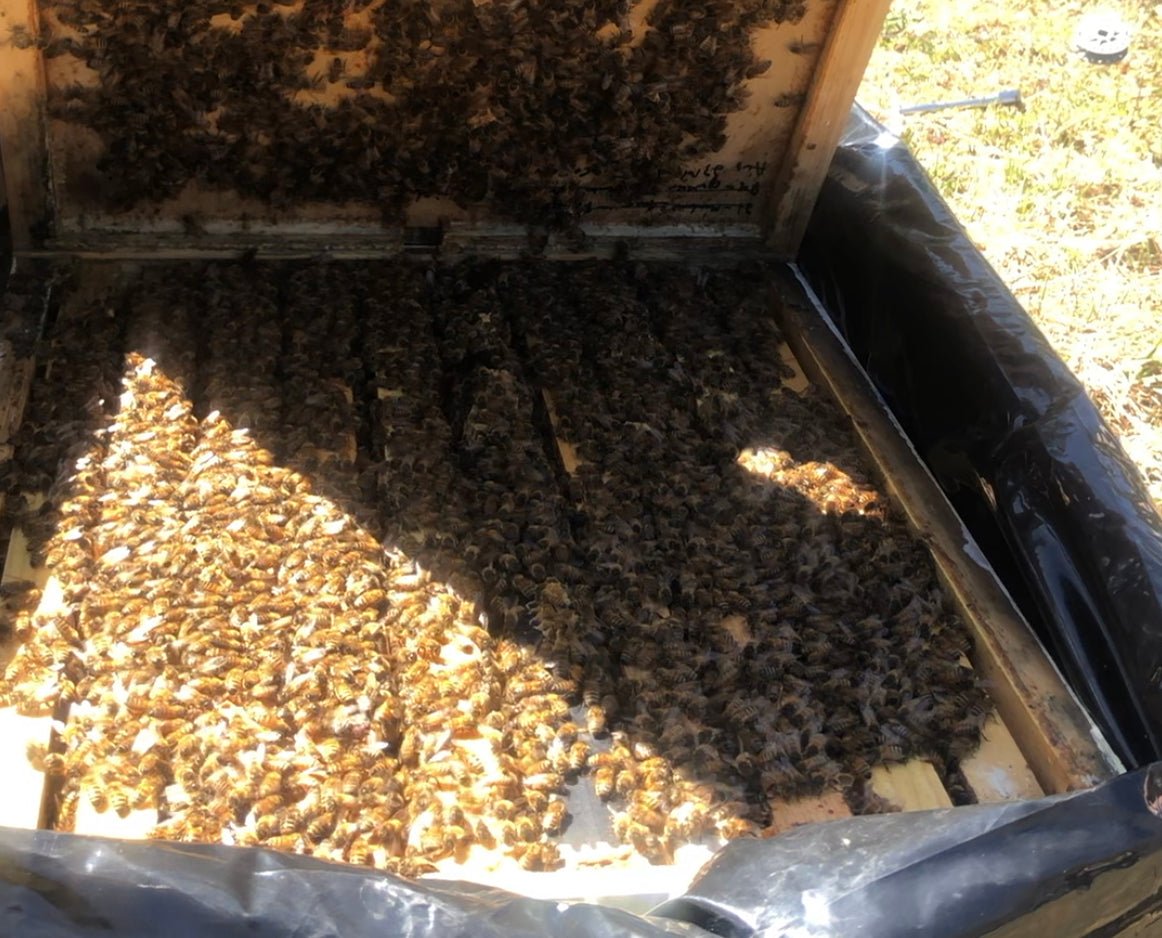
Spring Build Up
Having bees that quickly build up in the spring after a long winter is important in our climate. Beekeepers need to have enough bees to build back losses before the honey flow, or in our case, have lots of bees to start our mating Nucs. I love getting an early honey flow in late May and June and you need strong hives for that. Having a good population by the end of April is essential to us and a key screening tool we use to select our breeders.
Photo: What we are looking to see when we open hives. This is from April 22nd in our bee yard in Port Loring.
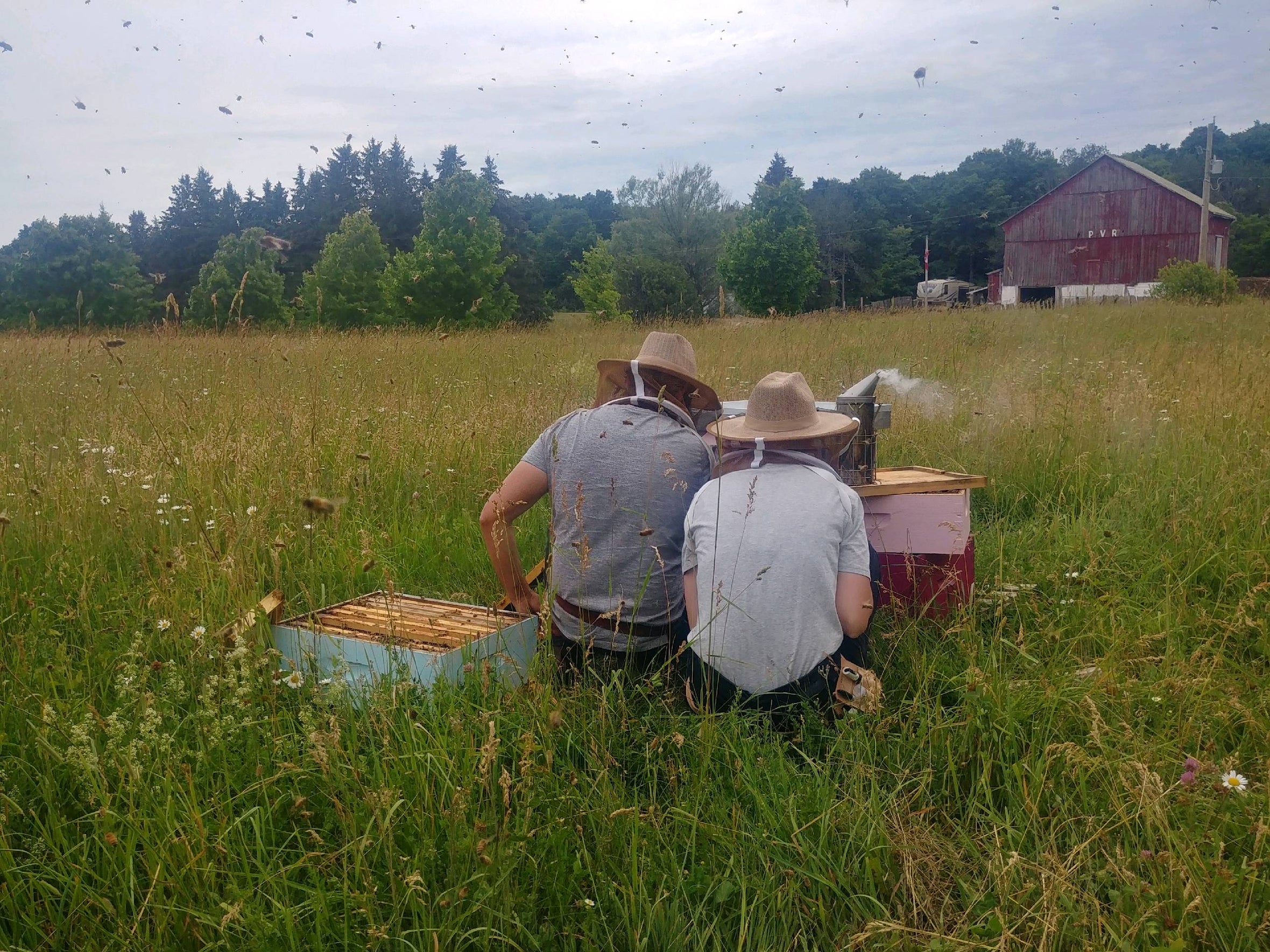
Gentle Bees
I hate getting stung, it sucks, I don’t hate it enough to not keep bees, but I am definitely not one of those people who don’t even notice if they have been stung. I want to work my bees in a t-shirt though… so I need to have fairly gentle bees. I don’t think my bees are the most gentle, however I can comfortable work my hives with a t-shirt and veil most of the summer and often go all day without getting a sting. I grade my hives on a scale of 1-5. 5 being that I can do a full hive assessment, pull brood frames and so on with no smoke and no stings. 4 being I do all of that with some smoke. 3 being I receive 1 sting during the hive inspection. Any hives that sting me more than once or send a few bees out to fly at me are not eligible as breeders and classed as 1’s or 2’s and are re-queened that year. I think aggressive bees are one of the biggest barrier for new beekeepers. A grumpy bee hive is very intimidating especially to a newbee.
Photo: Working bees in a mist in t-shirts in one of our Mulmur bee yards.
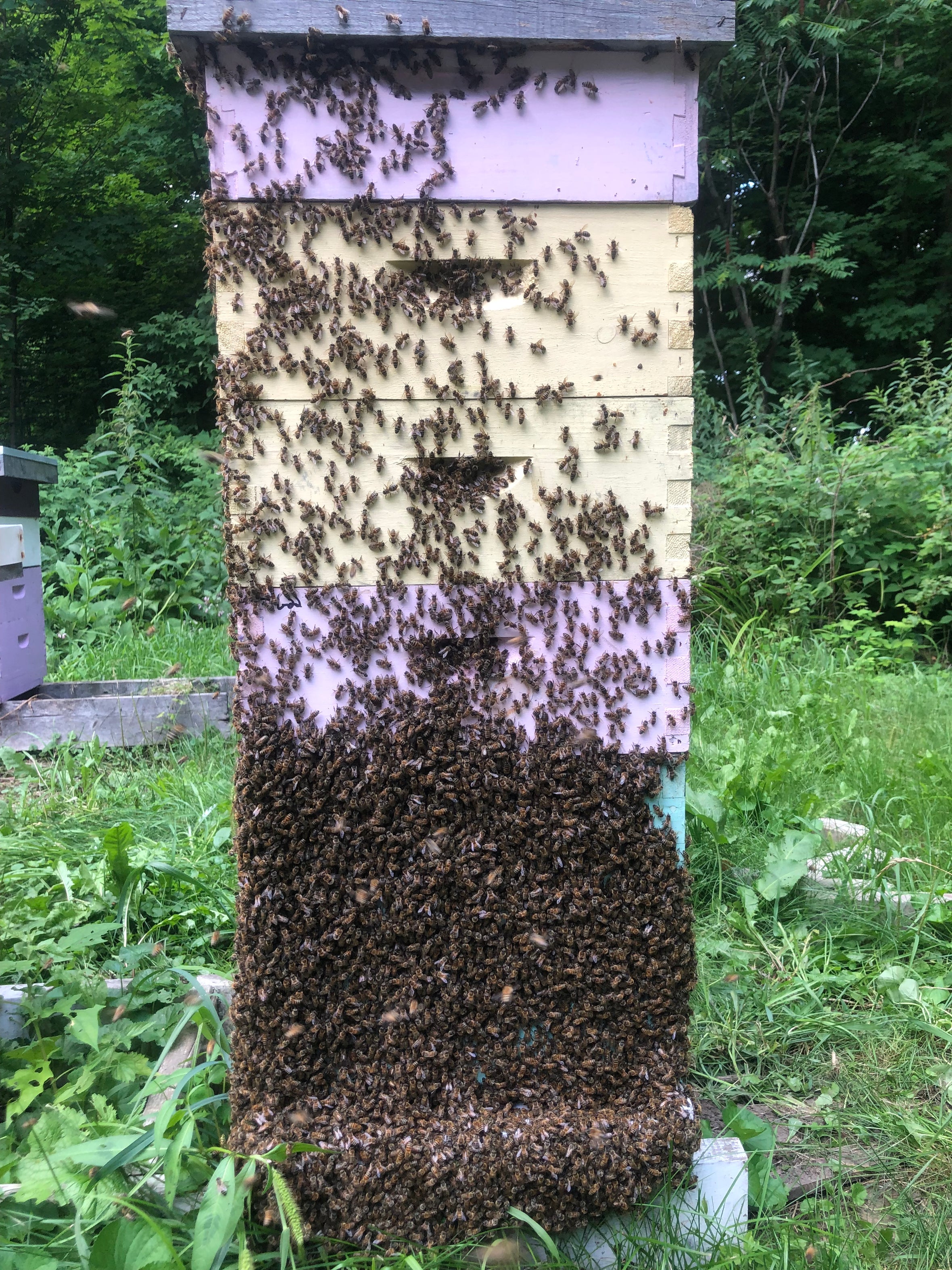
Good honey producers
There are a lot of factors that can affect honey production in a bee hive. Any amount of brood disease or mite load can have a negative effect on a hives honey production. If you have a failing queen or your hive swarms your honey yield will be reduced. However if you don’t have any of these factors there are bees that seem to forage earlier and later in the day. Fly even in a light rain and seem to just make more honey. If we have find some hives that are really outperforming the others in a yard we take note and asses it for our other breeding traits. On the contrary if we have selected a hive to be a breeder and it does not produce at minimum an average honey yield we will remove it from the program. We normally get around 3 medium boxes of honey and a box of comb from our hives on an average basis. Some do make more depending on the location and the year.
Photo: A breeder hive in August, with one honey harvest already done and another two honey boxes and two comb boxes on. (six boxes in total were harvested from this hive)
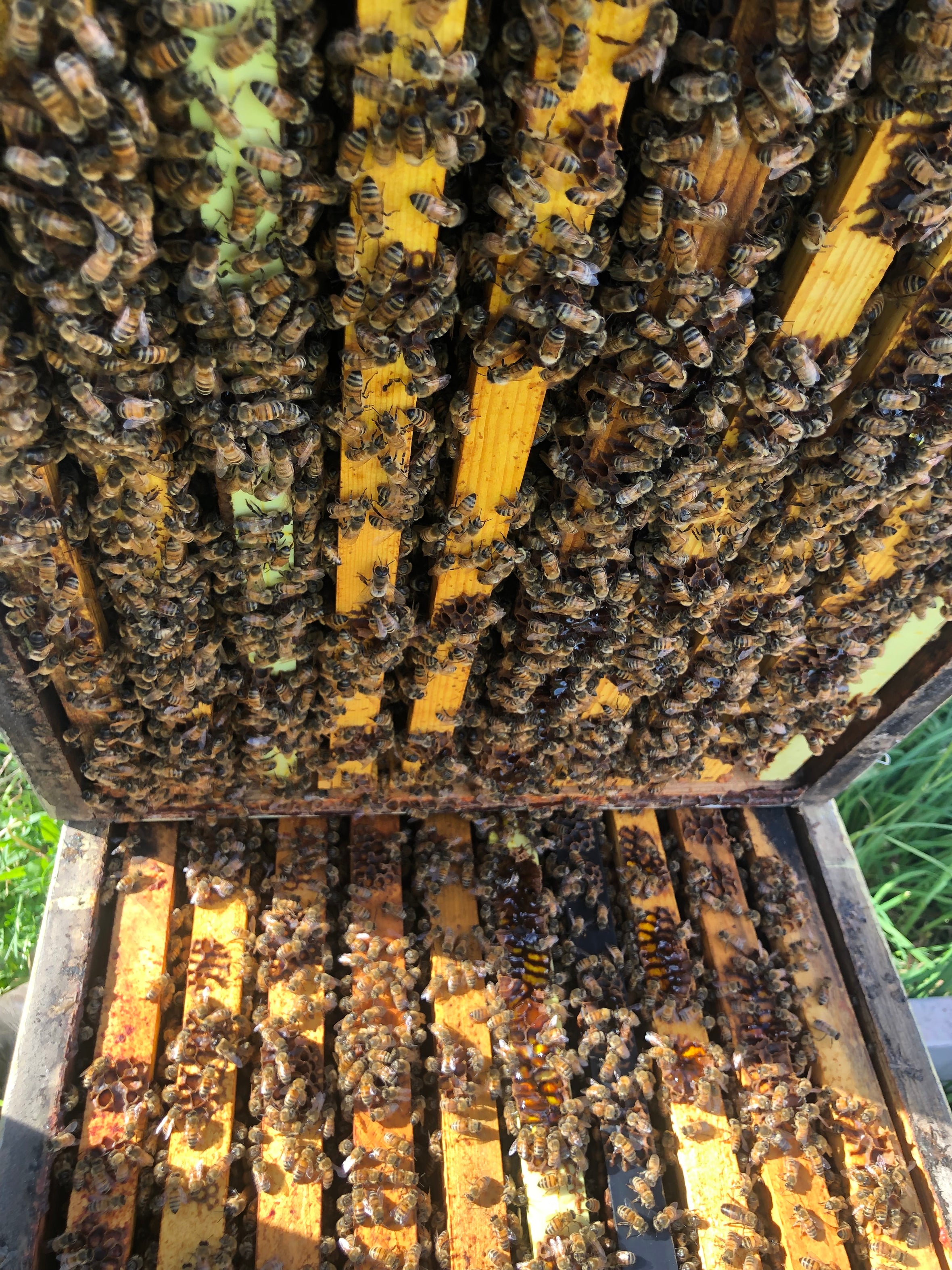
Low swarming tendency
BEES IN A TREE! The site most beekeepers do not want to see, at least on a regular basis. All hives will go through an urge to swarm and it is really up to the beekeeper to ensure the hive has enough space to expand. However there are for sure variations in the swarming tendency of hives. Some hives seem to swarm all year no matter what you do (I have bought bees before and quickly saw this first hand with some swarming two and three times in a season). Other hives I have as breeders, the queens are three years old and as long as I get supers on early to give them space to expand in the spring they are fine and I don’t need to go through ever to crush queen cells. The biggest issue that a beekeeper can get into is harvesting swarm cells to produce queens. If you do this repeatedly over a few years you will breed a higher swarming tendency into your hives. As a best practice If I have a hive that swarms even after I have done my swarm prevention, I will re-queen both the swarm and the daughter left behind. Most hives will swarm if the beekeeper does not react to the space the hive needs. We are working to breed bees that do not swarm after the hive has been expanded to accommodate the booming spring population.
Photo: A packed hive of bees in late May with no swarm cells present.
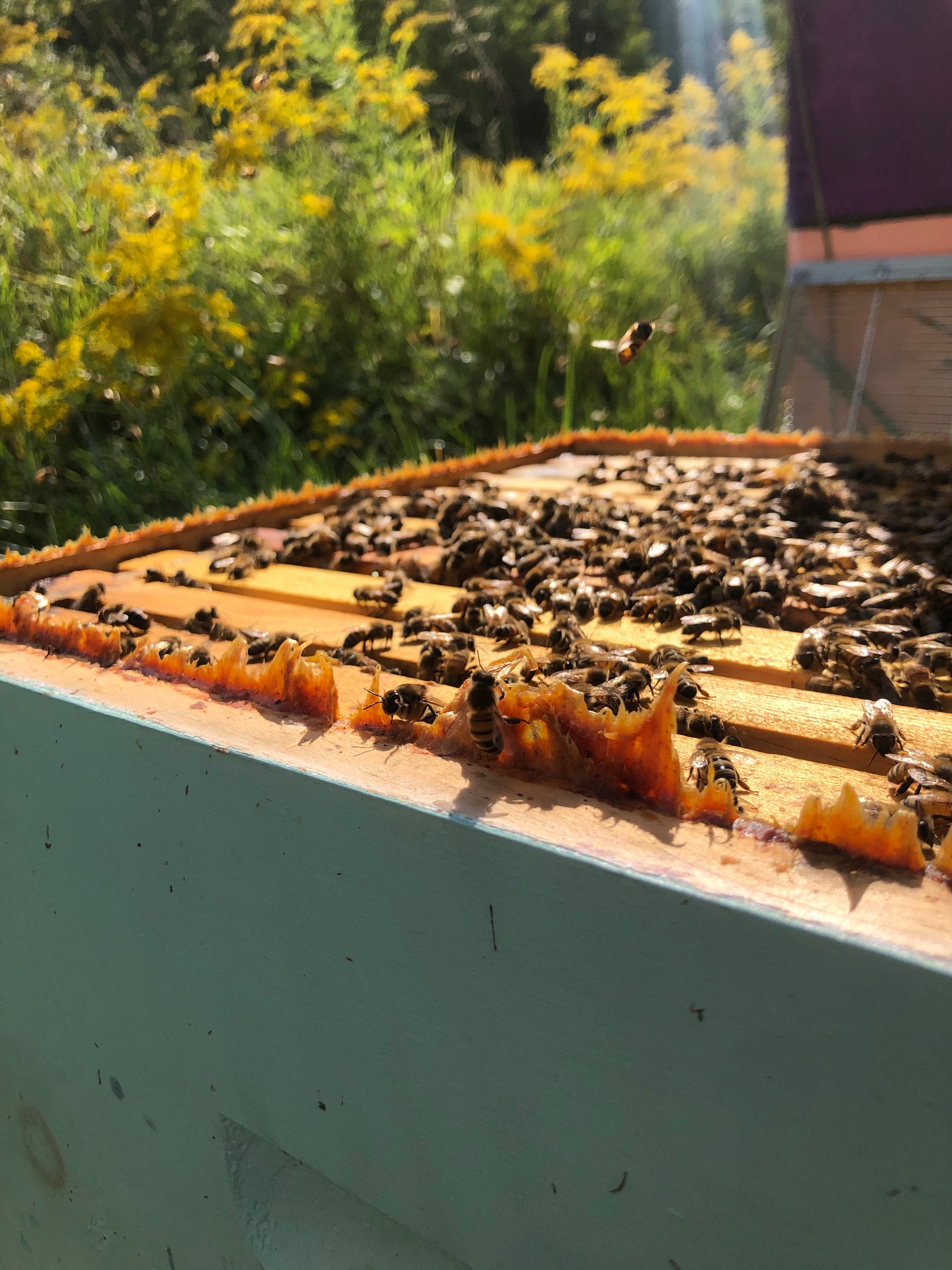
Good propolis collection
Propolis, the sticky stuff that makes it hard to get boxes apart and hard to pull frames out. Propolis is also a major part of the hives immune system, a factor that was unknown or overlooked when the majority of commercial beekeepers bread bees who collect very little propolis. This was done to make beekeeping easier and more efficient for beekeepers, especially ones checking a mass number of hives in a day.
More recently Dr. Marla Spivak at the University of Minnesota Bee Lab has been doing research on the importance of the propolis envelope in the hive. They have recently initiated a new breeding program which has propolis collection as a trait they breed for. A link to her work can be found in the link below for you to read further.
We have been selecting for propolis collection for the last three years and have already noticed an increase in the propolis in our hives.
Photo: A sticky propolis layer in August in one of our daughter hives.

